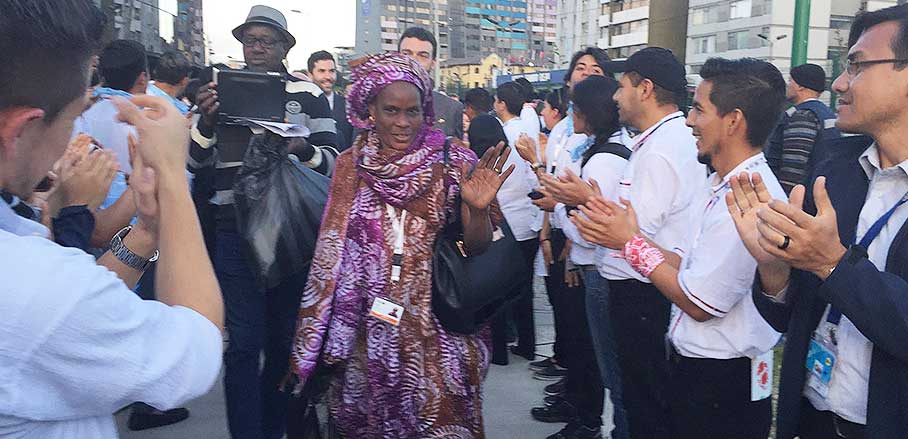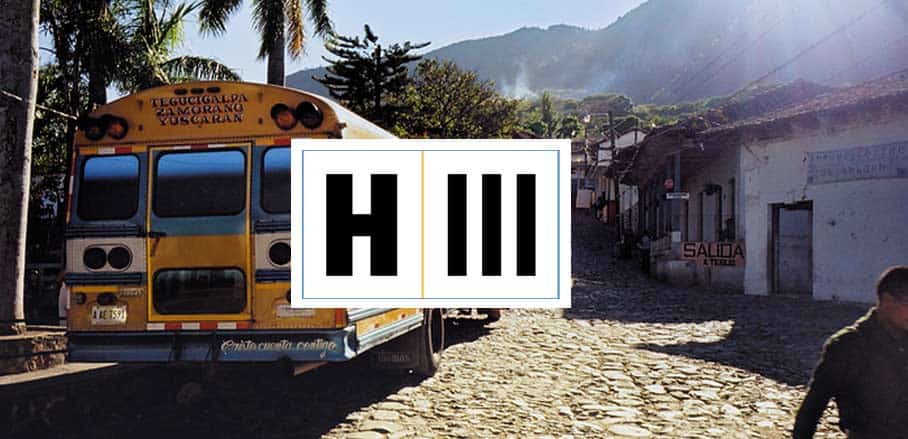Live from Quito, Day 4: Closing Day
Closing Day at Habitat III felt like urban field day in Quito: a stream of young students in different school uniforms filled the exhibition grounds. Twenty years from now, at Habitat IV, these students might be scientists, urban planners, transportation managers or leaders in public office – and their experiences from Habitat III may inspire them and help pave the way to a career in one of these fields. What’s for certain is that it taught them about the challenges of rapid urbanisation and the need for a sustainable turn in urban development.
Making it happen: Ideas and plans for sustainable cities
“Ideas are out there a lot,” said Ani Dasgupta, Global Director of the WRI Ross Center for Sustainable Cities (WRI), in an interview with URBANET at the German Pavilion. “But ideas are not enough. Ideas have to be brought to action to make an impact for sustainable development.” Following Dasgupta’s talk on a new WRI report, Frauke Kraas from the University of Cologne in Germany presented a recently published WBGU study titled “Humanity on the move: Unlocking the transformative power of cities”. WBGU is an independent, scientific advisory body set up by the German federal government in 1992 in the run-up to the Rio Earth Summit. “We need a paradigm shift to make cities more sustainable and inclusive,” Frauke Krass told her audience. The WBGU strongly advocates planned urbanisation and claims that unstructured, quasi-automatic urbanisation would inevitably lead to non-sustainable cities.
Ani Dasgupta took over the floor again from Frauke Kraas and discussed how cities can provide equal opportunities for all their citizens. “The New Urban Agenda,” he said, “is about cities that work. Meaning cities that work for all.” Dasgupta, who served as Director of Knowledge and Learning at the World Bank prior to joining WRI, stressed the fact that on their way to be sustainable and inclusive, cities need to be productive. The manufacturing sector of African cities, he explained, has not grown for the last 50 years; on the contrary, productivity has declined. Dasgupta thus stressed that one of the main tasks is to help cities become more productive in all sectors, especially those most in need.
Urbanisation creates value – and must be distributed fairly
“Urbanisation creates value to the citizens, and it is the responsibility of national governments to distribute this value in a fair and equal manner to all the citizens,” said Joan Clos, Secretary General of UN-Habitat, at the closing press conference on Thursday afternoon. The press conference had been scheduled for 1 pm, but on top of starting late, a power failure tried the assembled journalists’ patience. Fortunately, the technicians solved the power problems in time before the Closing Ceremony started at 3 pm. In his official closing remarks, Joan Clos warmly thanked Ecuador, the city of Quito and its citizens. Ecuador hosting Habitat III “allowed us to have a different conference”, said Clos, citing a few impressive numbers: 45,000 people were registered for the conference, and 35,000 people entered its premises, among them 10,000 international participants. More than 3,500 working staff made Habitat III happen, and an estimated 100,000 people took part in events on the conference’s premises and throughout the city. “This is an all time record,” said Clos.

Delegates leave the closing ceremony of Habitat III © GIZ
Reaching the goal: The New Urban Agenda has now been adopted
Accompanied by standing ovations of the delegates, the New Urban Agenda was adopted. This special moment was one everyone had been waiting for and that many delegates had been working towards for more than two years. “We have analysed and discussed the challenges that our cities are facing and have agreed on a common roadmap for the 20 years to come,” Joan Clos told the audience. “The New Urban Agenda is an ambitious agenda which aims at paving the way towards making cities and human settlements more inclusive.” He added that the New Urban Agenda underlines that “everyone can benefit from urbanization, paying particular attention to those in vulnerable situations.”
With the New Urban Agenda and the Quito Implementation Plan, the path is now laid out for cities’ sustainable future. From now on, the task is to implement the recommendations of the New Urban Agenda. Since it does not bind either UN member states or local governments to take specific actions or meet certain targets, it serves as a vision. Nevertheless, the signing members have committed themselves to action over the next 20 years. Whether and how they will succeed will be crucial for the global human community.
Today’s closing ceremony of Habitat III turned into an emotive experience when, seconds after the official closing, the Nick Horner Family took the stage to perform the Habitat III song, “City of dreams”. To their song, hundreds of volunteers marched through the assembly hall, cheering and waving and forming a guard of honour outside its doors. They applauded and gave high-fives to the delegates as they moved out of the venue. It was a most touching gesture – and reflected the atmosphere that had prevailed throughout the whole Habitat III conference in Quito.
